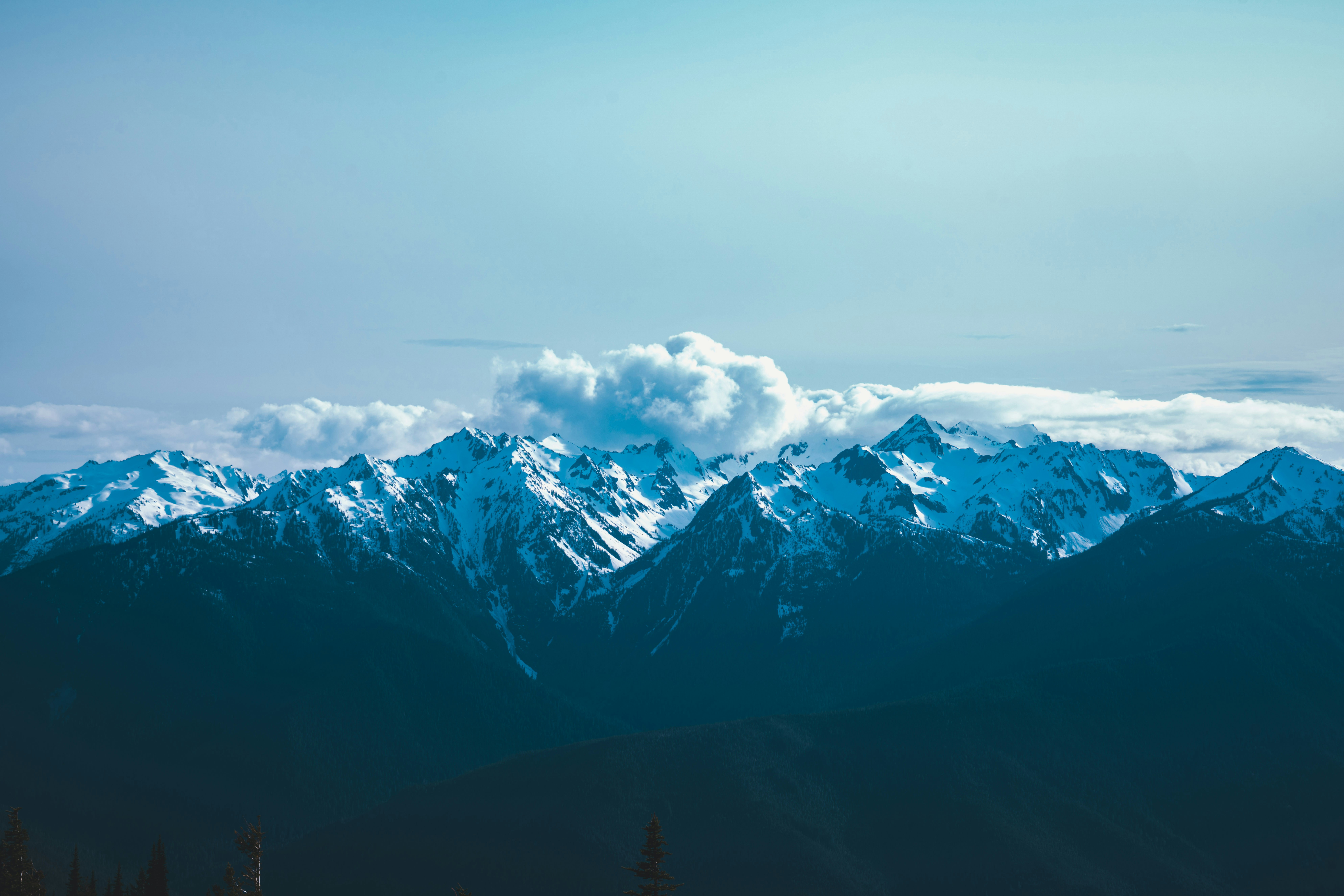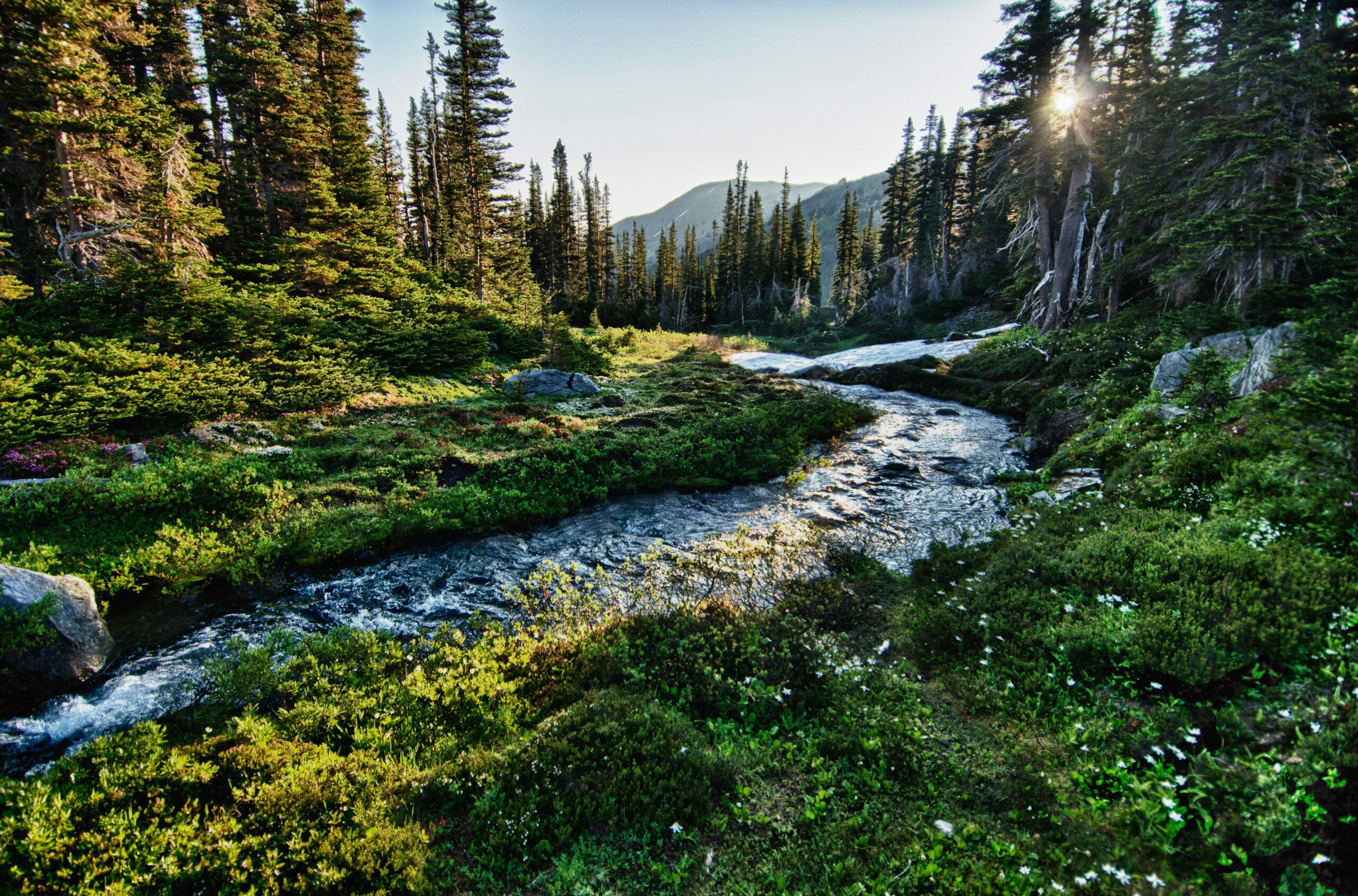Discover Olympic National Park
Visiting Olympic National Park in Washington State offers a rich tapestry of experiences, woven together by its profound natural beauty and cultural depth. With ecosystems ranging from alpine to coastal, this park plays host to an astonishing variety of wildlife and plant species.
Mount Olympus stands as a beacon for adventurers at nearly 8,000 feet tall. Those making the pilgrimage to its peaks are rewarded with stunning vistas and the satisfaction of conquering a giant. Yet, one doesn’t have to be a mountaineer to enjoy the park’s treasures. The coastline carves out rugged cliffs and sandy stretches, promising solitude and discovery with every tide.
Olympic National Park is a place where the wilderness whispers tales of the past. Local tribes like the Makah and Quileute have etched out a history rich with the land’s bounty, a reminder that, while visitors come and go, the spirit of the park remains immutable.
In every corner, Olympic National Park conjures a sense of wonder, urging visitors to linger just a little longer. It’s not just about the sights seen but the memories made, the stories shared, and the subtle yet profound connection with nature that beckons one to return.
Top 3 Facts About Olympic National Park
01
Large Size
Olympic National Park covers a vast area of 922,650 acres (about 1,442 square miles or 3,734 square kilometers), making it one of the largest national parks in the United States.
02
Diverse Ecosystems
Within Olympic National Park, you can find three distinct ecosystems: subalpine forest and wildflower meadows, temperate rainforests, and rugged Pacific coastline. These ecosystems are home to an incredible array of plant and animal species, including Roosevelt elk, black bears, mountain goats, and various species of birds.
03
High Levels of Rainfall
Olympic National Park is renowned for its high levels of precipitation, particularly in the temperate rainforests located on the western side of the park. The Hoh Rainforest, for example, receives an average annual rainfall of around 140 to 170 inches (355 to 432 cm), making it one of the wettest places in the continental United States.
Camping and transportation in Olympic National Park
How to Get to Olympic National Park
Getting to Olympic National Park can vary depending on where you’re coming from and which part of the park you want to visit. Here’s a general overview of how to get there:
- By Air: The closest major airport to Olympic National Park is Seattle-Tacoma International Airport (SEA). From there, you can rent a car or take public transportation to reach the park. Some smaller regional airports, such as the William R. Fairchild International Airport in Port Angeles, also offer limited service.
- By Car: If you’re driving, several major roads provide access to different parts of the park:
– From Seattle: Take the Bainbridge Island or Edmonds-Kingston ferry across Puget Sound, then drive west on Highway 104 to Highway 101, which leads directly to the park’s northern and eastern entrances.
– From Tacoma: Drive west on Highway 16 to Shelton, then follow Highway 101 north to the park.
– From the south: Take Interstate 5 to Olympia, then follow Highway 101 north to the park.
– From the east: Access the park via Highway 101 from towns like Port Angeles or Sequim. - Public Transportation: While public transportation options to Olympic National Park are limited, there are some bus services available from nearby cities like Seattle and Port Angeles. Additionally, some tour companies offer guided trips to the park.
- Ferry: If you’re coming from the Seattle area, taking a ferry across Puget Sound can be a scenic way to access the Olympic Peninsula. The Bainbridge Island and Edmonds-Kingston ferry routes are the most common choices for reaching the peninsula.
Places to Stay Near Olympic National Park
There are numerous camping options near Olympic National Park, ranging from developed campgrounds within the park to primitive campsites in nearby national forests and state parks. Here are some popular camping areas near Olympic National Park:
- Sol Duc Campground sits nestled within a captivating old-growth forest. It’s especially convenient for RV users, with 82 sites tailored for vehicles under 21 feet, and a select few accommodating up to 35 feet.
- Kalaloch Campground is renowned for its stunning coastal views. Out of the 168 sites, all include indispensable amenities like fire pits, picnic tables, and animal-proof food storage solutions—though there are no utility hookups. This campground also operates year-round, with the high season of summer offering reservation capabilities, while other times it’s a first-come, first-served deal.
- Staircase Campground offers the allure of riverside spots, boasting 47 RV-compatible sites with no utility hookups, operating year-round to satisfy the adventurous. Each location is equipped with the basics: fire rings, picnic tables, and food lockers. Come winter, it simplifies even further, offering no water and only pit toilets to brave campers.
- South Beach Campground is perched atop a bluff, allowing campers to greet the Pacific Ocean each morning. While the campground’s 55 sites provide minimal amenities, they make up for it with incredible views, flush toilets, and a proximity to Kalaloch for needed facilities.
- Hoh Campground immerses visitors in a land teeming with giant conifers and hanging moss. The 88 campgrounds have provisions for RVs up to 35 feet and extend beyond just the summer months.
Driving
You can drive within Olympic National Park, and several scenic drives offer stunning views of the park’s diverse landscapes.
Public
During the peak season (typically summer months), Olympic National Park operates a shuttle service called the “Olympic National Park Shuttle.” This shuttle primarily serves the Hurricane Ridge area, providing transportation from the Port Angeles Visitor Center to the Hurricane Ridge Visitor Center.
Parking
There are parking areas available within Olympic National Park at various locations, including visitor centers, trailheads, scenic viewpoints, and campgrounds.
Best Time to Go to Olympic National Park
Summer
Summer is the peak season for Olympic National Park, with warm temperatures and long daylight hours making it ideal for outdoor activities. Visitors can explore the park’s diverse ecosystems, from hiking in the mountains to beachcombing along the rugged coastline. Popular destinations like Hurricane Ridge, Lake Crescent, and the Hoh Rainforest can get crowded, so arriving early or visiting during weekdays can help avoid crowds. Summer is also the best time for camping, fishing, kayaking, and wildlife watching, with ample opportunities to see black bears, elk, and marine life.
Winter
Winter transforms Olympic National Park into a serene winter wonderland, with snow-covered peaks, frozen waterfalls, and quiet trails. While some areas of the park may be inaccessible due to snow, popular destinations like Hurricane Ridge offer opportunities for snowshoeing, cross-country skiing, and sledding. The Hoh Rainforest takes on a magical quality with moss-covered trees dusted in snow, creating a scene straight out of a fairytale. Winter is also an excellent time for birdwatching, as migratory species flock to the park’s coastal and wetland areas. However, visitors should be prepared for cold temperatures and changing weather conditions, as winter storms can impact road access and park facilities.
Spring
Spring is a vibrant time in Olympic National Park as the snow melts, rivers swell with runoff, and wildflowers begin to bloom. Visitors can enjoy mild temperatures and fewer crowds compared to the peak summer season. Hiking trails become accessible as snow recedes, offering opportunities to explore the lush rainforests and alpine meadows. The Hoh Rainforest comes alive with the sound of rushing waterfalls and the fresh greenery of new growth. Wildlife viewing is also excellent during spring, with chances to spot newborn animals and migrating birds.
Fall
Fall brings a kaleidoscope of colors to Olympic National Park as the foliage transforms into vibrant shades of red, orange, and yellow. The crisp air and cooler temperatures make it an excellent time for hiking, especially along trails such as the Sol Duc Falls or the Quinault Loop. Wildlife activity increases as animals prepare for winter, offering opportunities for photographers and wildlife enthusiasts. Fall also marks the salmon spawning season, with rivers and streams teeming with migrating fish. Visitors can witness this natural spectacle at spots like the Sol Duc River or the Elwha River.
Must-See Attractions
Helpful Tips: Making the Most of Your Adventure to Olympic National Park
Plan Ahead
Before your trip, take some time to research the park’s attractions, trails, and facilities. Familiarize yourself with maps and guides to identify points of interest and plan your itinerary based on your interests and available time.
Pack Appropriately
Be prepared for variable weather conditions, especially if you’re visiting during the shoulder seasons or winter. Pack layers, rain gear, sturdy footwear, sunscreen, insect repellent, and plenty of water. Don’t forget essentials like a map, compass or GPS, first aid kit, and snacks.
Respect Wildlife
Keep a safe distance from wildlife and never approach or feed them. Keep food and scented items properly stored to avoid attracting animals to your campsite or vehicle.
Check Part Alerts and Conditions
Stay informed about any park alerts, road closures, or weather conditions that may affect your visit. The National Park Service website and visitor centers provide up-to-date information on park conditions and closures.


Frequently Asked Questions about Olympic National Park
Olympic National Park is renowned for its diverse ecosystems, including temperate rainforests, rugged coastline, alpine meadows, and glaciated peaks. It’s also known for its rich biodiversity, stunning landscapes, and opportunities for outdoor recreation.
The best time to visit depends on your interests. Summer offers warmer weather and more outdoor activities, while spring and fall offer fewer crowds and opportunities to see wildlife and colorful foliage. Winter brings snow and fewer visitors, perfect for those seeking solitude and winter sports.
Yes, there are entrance fees for Olympic National Park. The fees vary depending on the type of entrance pass you choose. A single-vehicle pass is valid for seven consecutive days and allows entry for all occupants of a non-commercial vehicle.
Yes, Olympic National Park offers a variety of camping options, including developed campgrounds with amenities like restrooms and picnic areas, as well as backcountry camping for those seeking a more primitive experience. Reservations are recommended, especially during the peak summer season.
Olympic National Park offers a wide range of activities, including hiking, backpacking, camping, wildlife viewing, birdwatching, photography, fishing, kayaking, boating, and scenic drives. There are also opportunities for winter sports such as snowshoeing and cross-country skiing.
Yes, Olympic National Park is home to a variety of wildlife, including Roosevelt elk, black bears, mountain goats, deer, cougars, and numerous bird species. Visitors have opportunities to see wildlife throughout the park, especially in areas like the Hoh Rainforest and Hurricane Ridge.